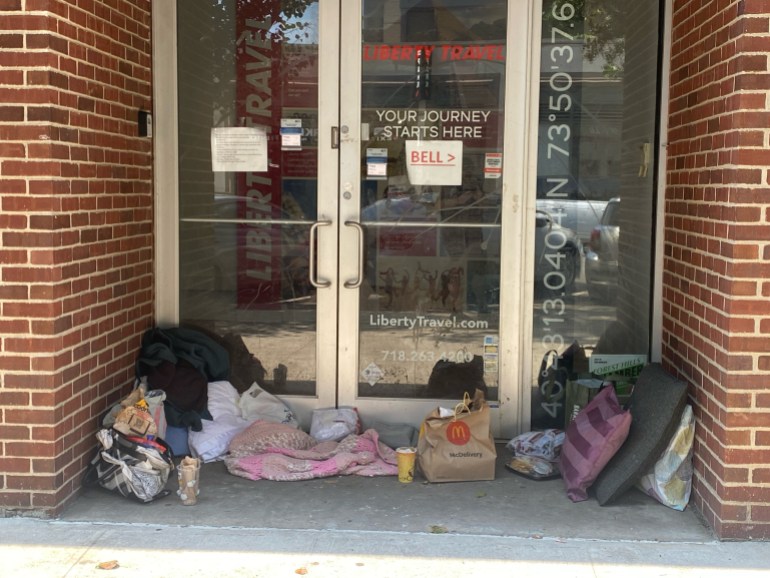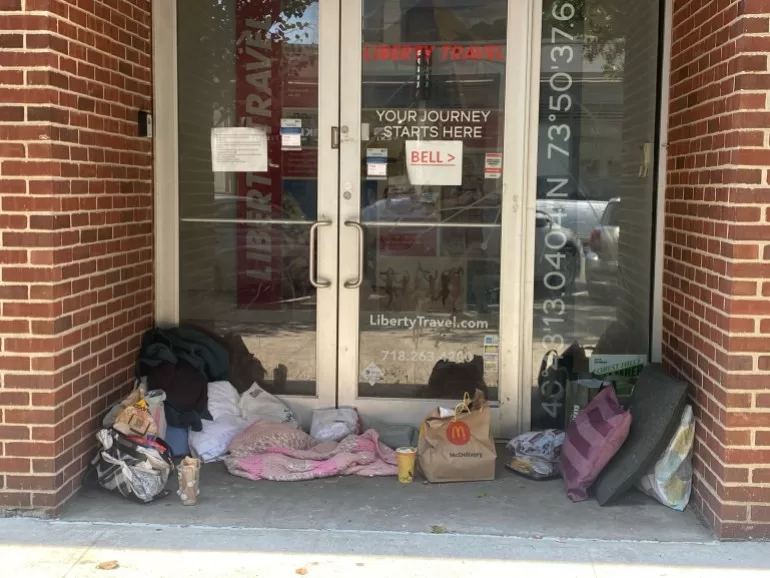The unexpected rise in the unemployment rate in the United States has left economists divided: Is the US on the brink of a recession or not?
The unemployment rate jumped to a nearly three-year high of 4.3 percent in July, as per data released Friday. The increase – up from 4.1 percent in June, and up from a five-decade low of 3.4 percent in April last year – sets the stage, more than ever, for a cut in interest rates in the next Federal Reserve meeting in September.
Which raises the question: Is it too late?
The jump in the unemployment rate “points to a recession in 2025”, Gary Clyde Hufbauer, nonresident senior fellow at the Peterson Institute for International Economics, told Al Jazeera. “I’m expecting the [US] Fed to start cutting the policy rate in September, and to continue cutting in subsequent meetings. That response will probably ensure a shallow recession,” he added.
The equity markets, too, reacted in fear of a recession. The Dow Jones average tumbled more than 700 points – almost 2 percent – in afternoon trading Friday, and the broader S&P 500 fell 2 percent, with Wall Street banks calling for bigger and more rate cuts than had been expected so far.
Economists at Goldman Sachs and Citigroup, among others, revamped their expectations to a half-point rate cut in September as well as in November, and a quarter-point rate cut in December.
All of this falls on the back of a week of weak data, including a slowdown in manufacturing and negative employment sentiments, which points towards an economic downtrend.
‘Doesn’t signal a recession’
But not everyone agrees with this scenario.
“We don’t see a recession even though the stock market today is behaving like it anticipates a recession,” Nancy Vanden Houten, lead economist at Oxford Economics, told Al Jazeera.
“The jobs report was definitely weaker than most economists were expecting and we’re not dismissing the signs of a softer labour market, but there are things going on beneath the surface” that need to be accounted for while looking at the Friday data, Vanden Houten said.

For one, there are a lot more people looking for jobs – about 420,000 people entered the labour force last month. These are new immigrants joining the workforce, and “that is a good thing”, Vanden Houten pointed out.
Also, in the jobs survey, there was a big jump in the number of people who claimed to be on a temporary layoff or not working because of bad weather, referring to the slowdown in work in Texas because of Hurricane Beryl last month.
“The number of people reporting to have not worked in July because of bad weather was higher than any non-winter month since September 2017, when the effects of Hurricanes Harvey, Irma and Maria were battering the Southeastern US,” said Matt Colyar, assistant director at Moody’s Analytics.
“This is just evidence that what the federal reserve wanted to do – slow down the economy, slowing jobs so people don’t keep switching jobs and getting high 8-10 percent raises – is happening. This doesn’t signal a recession,” Colyar told Al Jazeera.
Moreover, the last pre-pandemic recession had other catalysts for a downturn, including very high household debt and mortgages that home owners couldn’t keep up with, a situation that currently doesn’t exist, explained Vanden Houten.
The data has, however, kicked off chatter about the so-called “Sahm rule”. Former Federal Reserve economist Claudia Sahm invented a measure that examines how fast the unemployment rate is rising to determine if it is an indication of a recession.
But Sahm herself has doubted that a recession is “imminent’’ even though the Sahm rule was close to triggering.
For now, both Vanden Houten and Colyar are sticking with earlier predictions of rate cuts: one quarter-point cut in September and one in December.
“It’ll take more than one bad jobs report for me to say that the recession they’ve been waiting for every day is finally here,” said Colyar.
All eyes for now are on next month’s jobs report for a clearer picture of the job market and the US economy. Until then, economists like Colyar will be tracking the weekly unemployment claims to get a sense of things on the ground, he said.
Nevertheless, the latest data will play into the upcoming presidential elections.
Former President Donald Trump’s campaign on Friday said the jobs report is “more evidence that the Biden-Harris economy is failing Americans”, The Associated Press news agency reported.
Any weakening in the economy will go against the incumbent, Vanden Houten said. Even though President Joe Biden is no longer in the running, Vice President Kamala Harris is part of Team Biden and this can impact her negatively, Vanden Houten pointed out.
